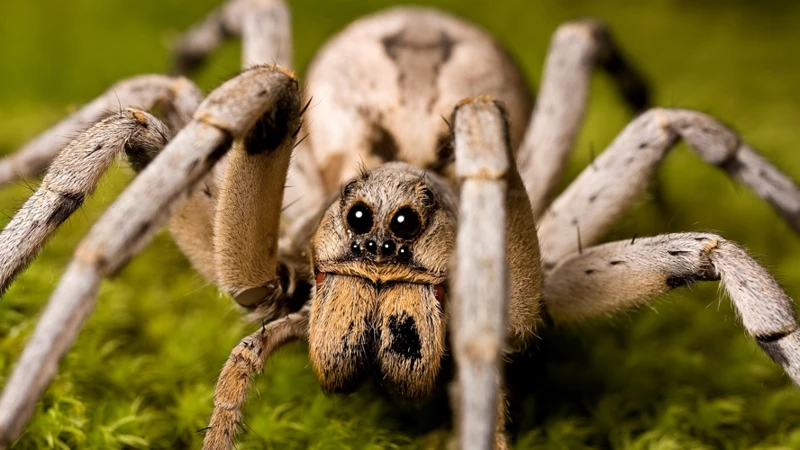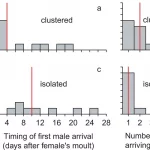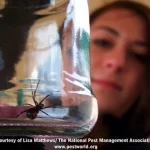The intricate hunting behavior of wolf spiders has fascinated scientists and adventurers alike. With their impressive speed and ambush tactics, these arachnids navigate a complex web of environmental factors to catch their prey. However, the impact of these factors on wolf spider hunting remains a topic of conjecture for many. In this article, we will explore the influence of key environmental factors such as light, temperature, and substrate on wolf spider ambush hunting. Through a step-by-step analysis, we’ll uncover the secrets of these elusive predators and gain a deeper understanding of their behavior. Join us on this journey as we unravel the web of wolf spider ambush hunting.
Factors Affecting Wolf Spider Ambush Hunting

As fascinating hunters, wolf spiders have evolved to rely on specific environmental factors to effectively hunt their prey. By understanding these factors, we can gain better insight into the ways in which these spiders have adapted to survive in their surroundings. In this section, we will explore the factors that play a significant role in wolf spider ambush hunting. We will delve into how light, temperature, and substrate affect their hunting, and how it impacts their successful capture of prey. To learn more about wolf spider hunting tactics, efficiency, and camouflage hunting, check out our articles on wolf spider hunting tactics, wolf spider hunting efficiency, and wolf spider camouflage hunting.
Light
Light is one of the primary environmental factors affecting wolf spider ambush hunting. These spiders are primarily nocturnal hunters, preferring to hunt their prey under the cover of darkness. However, they have been known to engage in hunting during the day in certain conditions.
Impact of Light on Wolf Spider Ambush Hunting
The intensity, color, and duration of light can affect wolf spider ambush hunting in several ways. A study published in the Journal of Arachnology found that the presence of artificial light can significantly reduce the number of wolf spiders caught in pitfall traps. It is believed that the light interferes with the spiders’ ability to detect and capture prey.
On the other hand, another study published in the same journal found that wolf spiders can still hunt during the day under certain conditions. Specifically, they found that wolf spiders hunted more successfully on cloudy days and in shade habitats.
To summarize, light can both positively and negatively impact wolf spider ambush hunting, depending on different factors. The table below shows the summary of how different light conditions can impact wolf spider hunting activity:
| Light Condition | Impact on Wolf Spider Ambush Hunting |
| Artificial light | Reduces hunting success |
| Bright sunlight | Decreases hunting activity |
| Cloudy day | Increase hunting success |
| Shaded habitat | Increase hunting success |
Light is a crucial environmental factor affecting wolf spider ambush hunting. Spiders’ ability to detect and capture prey can be significantly impacted by the presence and characteristics of the light. However, their hunting activity can still occur successfully under certain light conditions.
Temperature
Temperature is a crucial environmental factor that determines the success of wolf spider hunting. Wolf spiders are ectothermic, which means that their body temperature is dependent on the environment around them. The ideal temperature for wolf spiders ranges from 20-30°C (68-86°F), and anything outside that range can significantly affect their hunting abilities. Let’s take a closer look at how temperature affects the wolf spider’s ambush hunting.
| Temperature Range (°C/F) | Effect on Wolf Spider Ambush Hunting |
|---|---|
| Below 20°C (68°F) | The wolf spider’s metabolism slows, and its movements become sluggish. As a result, it has difficulty chasing and capturing its prey, which reduces its overall hunting success. |
| 20-30°C (68-86°F) | The wolf spider’s body is at its optimal temperature range, which enhances its agility and speed. Thus, it can ambush and capture its prey more efficiently and with ease. |
| Above 30°C (86°F) | The wolf spider’s body becomes overheated, which causes it to become lethargic and less active. It may retreat to cooler areas, reducing its hunting success for a while due to this change of habitat, or have reduced success due to the overheating of its prey. |
According to some studies, the preference for temperature varies among wolf spider species. For example, some species prefer cooler temperatures, while others thrive in warmer temperatures. It’s vital to consider the specific species before analyzing the impact of temperature on wolf spider ambush hunting.
It’s worth noting that the temperature also affects the activity and availability of the wolf spider’s prey. Some species of insects are more prevalent in specific temperature ranges, and if the temperature goes beyond their tolerance, their populations decrease. This reduction in prey availability can significantly affect the success of the wolf spider’s ambush hunting.
Temperature is a critical environmental factor that affects the wolf spider’s ambush hunting success. The ideal temperature range for their hunting success is between 20-30°C (68-86°F). Anything below or above that range can lead to decreased efficiency and agility and reduces the chances of a successful hunt.
Substrate
Substrate refers to the surface on which wolf spiders hunt their prey. This factor plays an important role in their successful ambush hunting. Substrate affects not only their ability to move but also their visibility and their prey’s ability to detect them.
Types of Substrate:
Different types of substrate offer various challenges and benefits to wolf spiders. They often hunt in areas with dry leaves, gravel, sand, or soil. The type of substrate affects their ability to move and hide from their prey. For example, sand may hinder their movement as it shifts under their legs, while dry leaves may provide cover for them to hide behind.
Impact on Wolf Spider Ambush Hunting:
Substrate availability may affect wolf spider populations, as they prefer certain substrates to hunt effectively. For instance, according to a study published in the Journal of Arachnology, wolf spiders are more abundant in areas with leaf litter substrate as it offers better hiding places and prey detection. However, other studies suggest that spider abundance is more related to prey availability than substrate type.
Substrate may also affect wolf spider morphology and behavior. Certain substrates may select for certain body types or hunting behaviors, resulting in the development of different subspecies or even species. For example, wolf spiders in the genus Hogna are commonly found on sand dunes, and have evolved to have a pale coloration to blend in with the sand.
Conclusion:
Wolf spiders are adaptable predators and can hunt in various types of substrate. However, substrate availability may affect their population, behavior, and morphology. It is important to study the impact of substrate on wolf spider ambush hunting.
Impact of Environmental Factors on Wolf Spider Ambush Hunting
As we have seen from the previous section, a wolf spider’s ambush hunting ability is dependent on various environmental factors. In this section, we will take a closer look at how these factors affect wolf spider’s hunting ability. Understanding the nuances of the impact of environmental factors on wolf spider ambush hunting can help us better appreciate the intricacies of their hunting technique and provide insights into their behavior. Let us explore the influence of light, temperature, substrate, and other environmental factors, that can either improve or hinder the wolf spider’s ambush hunting tactics.
Light
Light is a major factor that influences wolf spider ambush hunting. Daylight intensity plays a crucial role in the ambush hunting of wolf spiders. Studies have shown that wolf spiders are more active during the nighttime when natural light is low, and they are less active during the daytime when light exposure is high. This is because too much exposure to bright light can cause wolf spiders to become disoriented, and they prefer to hunt in dim light as it helps them to remain hidden from predators and prey.
However, some species of wolf spiders are known to be active during the day as they prefer bright light conditions. This is because they have adapted to hunting in the sunlit conditions, and they possess special eyesight that helps them to target and capture prey quickly. For example, the gliding spider (Selenops spp) is known for its jumping ability, and it usually hunts during the day when its vision is better.
It is not only the intensity of light that affects wolf spider behavior but also the wavelength of light. Some studies suggest that UV radiation emitted by sunlight can strongly affect the hunting behavior of wolf spiders, causing them to avoid areas with high UV radiation levels.
It can be concluded that light plays an essential role in wolf spider ambush hunting, and different species may have their preferences for the intensity and wavelength of light. If you want to learn more about wolf spider ambush hunting and their prey, check out our article on wolf spider ambush hunting and their prey.
Temperature
Temperature is another crucial factor that plays a significant role in wolf spider ambush hunting. These spiders are cold-blooded, which means their body temperature and metabolic rate are directly dependent on the environment’s temperature. The ambient temperature affects the spider’s hunting behavior, sensory systems, and metabolic rate. Ambient temperature also influences the spider’s prey detection and capture success rate.
The following table shows the impact of temperature on wolf spider behavior:
| Temperature Range (°C) | Behavioral Response |
|---|---|
| 0-10 | – Inactive |
| 10-20 | – Reduced activity |
| 20-30 | – Increased activity |
| 30-40 | – Optimal activity |
| >40 | – Reduced activity |
As seen in the table, wolf spider activity increases with an increase in temperature to an optimal level. The optimal temperature range for wolf spider ambush hunting is from 30-40°C. Wolf spiders alter their metabolism and behavioral patterns to adapt to changing temperatures. For instance, at low temperatures, the wolf spider’s metabolic rate decreases, leading to reduced activity levels. In contrast, at high temperatures, a reduction in metabolic rate helps conserve energy.
Additionally, temperature affects the spider’s prey detection and capture success rate. In warm environments, wolf spiders experience reduced prey capture success rates because their prey has increased mobility due to elevated body temperatures. Conversely, cooler temperatures lead to slower prey activity, presenting an opportunity for wolf spiders to capture them more efficiently.
Temperature is a crucial environmental factor that affects wolf spider ambush hunting significantly. The spider’s activity levels, metabolism, and prey capture success are directly related to the temperature of the environment. Understanding the impact of temperature on wolf spider hunting behavior is crucial in predicting the predator-prey interactions within ecosystems.
Substrate
The substrate on which a wolf spider hunts can have a significant impact on its ambush hunting technique. These spiders are known for their ability to camouflage themselves and blend into their surroundings, and substrate plays a crucial role in this process. Here are some factors to consider:
- Texture: The texture of the substrate can affect how easily a wolf spider can blend in. For instance, a spider might have a harder time camouflaging itself on a surface with a smooth texture, such as a granite rock, compared to a rougher texture, such as bark on a tree.
- Color: The color of the substrate is also important, as it can impact how well a spider can blend in. A spider on a substrate that matches its body color is likely to be less visible to potential prey.
- Height: The height of the substrate off the ground can also play a role in wolf spider ambush hunting. Spiders that are closer to the ground are able to move more quickly and stealthily on their prey, while those that are higher up might have a harder time blending in or moving without being detected.
Substrate is a crucial component of wolf spider ambush hunting. The texture, color, and height of the surface they are on can all impact the success of their hunting technique. By blending into their environment, wolf spiders are able to surprise and capture their prey more easily.
Other Environmental Factors
In addition to light, temperature, and substrate, there are several other environmental factors that can impact the ambush hunting behavior of wolf spiders. Some of these factors include:
- Humidity: High humidity levels have been shown to increase the activity levels of wolf spiders, while low humidity levels can lead to dehydration and reduced activity.
- Vegetation: The presence or absence of vegetation in an area can impact both the hunt success rate of wolf spiders and their ability to remain hidden from prey and predators.
- Predators: The presence of predators, such as birds and lizards, can disrupt the ambush hunting behavior of wolf spiders. They may choose to remain hidden rather than actively hunting prey to avoid being detected by predators.
- Competition: Other wolf spiders or predators competing for the same resources can also impact the ambush hunting behavior of wolf spiders. They may choose to either focus on hunting or remain hidden depending on the level of competition.
- Barometric Pressure: Changes in barometric pressure can also impact the activity levels of wolf spiders. Low pressure systems can stimulate increased activity, while high pressure systems can lead to reduced activity levels.
It’s important to note that while these environmental factors can impact the hunting behavior of wolf spiders, they do not necessarily dictate their behavior. Wolf spiders are able to adapt to different environmental conditions and adjust their hunting strategies accordingly. Understanding the impact of these environmental factors on wolf spiders can provide valuable insight into their behavior and ecology.
Conclusion
After analyzing the impact of environmental factors on wolf spider ambush hunting, it is evident that these factors play a significant role in the hunting success of wolf spiders. Factors such as light, temperature, and substrate can influence the spider’s ability to hunt, capture prey, and survive.
In regards to light, it is seen that wolf spiders prefer low light conditions for hunting, allowing them to remain hidden from prey while also improving their ability to locate prey. However, too much light, such as direct sunlight, can limit their ability to hunt by making them more visible to predators.
Temperature also plays an important role in wolf spider ambush hunting. Optimal temperature conditions allow for increased hunting activity and successful prey capture. However, extreme temperatures, such as those found in extremely hot or dry environments, can prove to be detrimental to wolf spider hunting success.
Substrate can also affect wolf spider hunting success, as it can impact their ability to hide and move quickly. A substrate with lots of obstacles, such as tall grasses or rocks, can create suitable hiding spots that enhance hunting success. On the other hand, a substrate with fewer hiding spots can make wolf spiders more vulnerable to predators and limit their ability to capture prey.
Other environmental factors such as humidity and wind can also impact ambush hunting success, as they can alter the spider’s ability to detect prey or navigate their environment. Being aware of these environmental factors and their impact can help scientists and researchers better understand how wolf spiders hunt and how they can be impacted by changes in their environment.
In conclusion, environmental factors such as light, temperature, and substrate play a significant role in the hunting success of wolf spiders. By understanding these factors, one can learn more about the behavior and habits of wolf spiders and how they interact with their environment.
Frequently Asked Questions
What is wolf spider ambush hunting?
Wolf spider ambush hunting is a hunting strategy used by wolf spiders where they wait for prey to come within striking distance and then pounce on them.
What time of day do wolf spiders hunt?
Most species of wolf spiders hunt at night, but some species are active during the day.
What do wolf spiders eat?
Wolf spiders eat a variety of insects and other small creatures such as crickets, grasshoppers, and beetles.
Do wolf spiders live in groups or alone?
Wolf spiders are solitary creatures and do not live in groups.
How long do wolf spiders live?
The lifespan of a wolf spider depends on the species, but most live for about one year.
Do wolf spiders bite humans?
While wolf spiders are not aggressive towards humans, they will bite if threatened. Bites from wolf spiders are usually not dangerous but can be painful.
Where do wolf spiders live?
Wolf spiders can be found in a variety of habitats including forests, deserts, and grasslands.
How can environmental factors affect wolf spider ambush hunting?
Environmental factors such as light, temperature, and substrate can all impact the success of wolf spider ambush hunting.
Can wolf spiders see in the dark?
Wolf spiders have good night vision and can see well in low light conditions.
Do wolf spiders create webs?
No, wolf spiders do not create webs to catch prey. They rely on their hunting skills to ambush and capture their prey.






